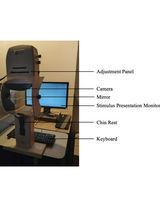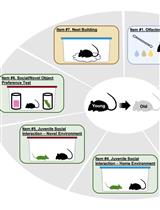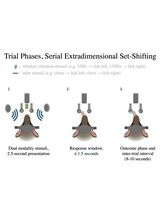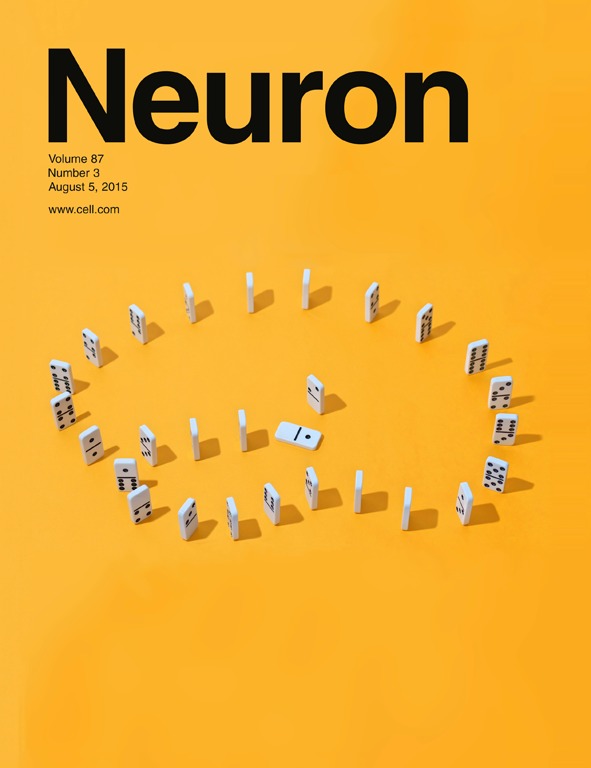- Submit a Protocol
- Receive Our Alerts
- Log in
- /
- Sign up
- My Bio Page
- Edit My Profile
- Change Password
- Log Out
- EN
- EN - English
- CN - 中文
- Protocols
- Articles and Issues
- For Authors
- About
- Become a Reviewer
- EN - English
- CN - 中文
- Home
- Protocols
- Articles and Issues
- For Authors
- About
- Become a Reviewer
Light/Dark Transition Test to Assess Anxiety-like Behavior in Mice
Published: Vol 6, Iss 19, Oct 5, 2016 DOI: 10.21769/BioProtoc.1957 Views: 23702
Reviewed by: Soyun KimXi FengAnonymous reviewer(s)

Protocol Collections
Comprehensive collections of detailed, peer-reviewed protocols focusing on specific topics
Related protocols

Pupillometry: A Simple and Automatic Way to Explore Implicit Cognitive Processing
Tian Yuan [...] Yi Jiang
Apr 5, 2025 1234 Views

The Mouse Social Frailty Index (mSFI): A Standardized Protocol
Charles W. Collinge [...] Alessandro Bartolomucci
Apr 20, 2025 1733 Views

Training Mice to Perform Attentional Set-Shifting Under Head Restraint
Katarina Kalajzic [...] Timothy Spellman
Sep 5, 2025 1389 Views
Abstract
The light/dark transition test (LDT) is one of the most widely used tests to measure anxiety-like behavior in mice. The test is based on the natural aversion of mice to brightly illuminated areas and on their spontaneous exploratory behavior in response to mild stressors, such as novel environment and light. This test is also sensitive to anxiolytic drugs treatment. The test apparatus consists of a box divided into a small (one third) dark chamber and a large (two thirds) brightly illuminated chamber. Mice are placed into the lit compartment and allowed to move freely between the two chambers. The first latency to enter the dark compartment and the total time spent in lit compartment are indices for bright-space anxiety in mice. Transitions are index of activity-exploration, because of habituation over time. LDT is quick and easy to use, without requiring prior training of animals. Here, we present our protocol that has been able to detect both anxiolytic-like (reduced anxiety) and anxiogenic-like (increased anxiety) behavior in mice.
Keywords: AnxietyMaterials and Reagents
- Paper towels
- Laboratory-bred mice
Note: Mice housed in groups 3-5 per cage, kept in a room with controlled temperature (~23 °C) and humidity under 12 h light/dark cycle (lights on at 7:00 AM) with ad libitum access to food and water. - 70% ethanol
Equipment
- The apparatus for the light/dark transition test consists of a box (42 x 21 x 25 cm) divided into a small (one third) dark compartment and a large (two thirds) illuminated compartment (Crawley and Goodwin, 1980). A restricted opening 3 cm high by 4 cm wide connects the two chambers (Figure 1).
- Indirect white light source
- Digital lux meter
- Video camera (placed directly above the apparatus)
- Digital chronometers for manual analysis or computer for automated analysis

Figure 1. Light-dark transition test apparatus
Software
- TSE-Systems, model: VideoMot2 (computer software for automated analysis)
Procedure
- The apparatus is placed in an isolated room away from any external interferences and noises with a low-intensity white light source.
- The experimenter must restrict from making any excessive noise during the test and from wearing odorant products with strong smell, since it could act as an anxiogenic stimulus for the mice.
- The illumination in the lit chamber must be 200-400 lux or more, while the other chamber is dark (5 lux or less).
- The mice are transferred in their home cages to the behavioral testing room for at least 30 min before the experiment.
- Clean both compartments of the apparatus with 70% ethanol.
- Turn on the camera and place the first mouse in the middle of the brightly illuminated chamber.
- The experimenter stays as far away as possible from the box and out of sight of the test animal.
- The mouse is allowed to move freely between the two chambers for 5 min (Costall et al., 1989).
- After each trial, all the urine and fecal boli are removed and both chambers are cleaned with 70% ethanol.
- The recorded videos can be analyzed by automated computer software or manually with the aid of chronometer. The following parameters are scored (Figure 2):
- The latency time to enter the dark compartment (Costall et al., 1989).
- The time spent in the lit/dark compartment.
- The distance travelled in the lit chamber.
- The number of transitions.
Representative data

Figure 2. Sample data from light-dark transition test showing anxiolytic-like behavior of TG mice. A. Time spent in the lit compartment; B. Traveled distance in the lit compartment; C. latency time to enter the dark compartment; D. Number of transitions.
Notes
- The LDT was originally developed by Crawley and colleagues (Crawley and Goodwin, 1980). There are two differences between the original version and our test. First, the duration of the test is 10 min in the original version, whereas we used only 5 min testing time (Costall et al., 1989). Second, in the original version, the walls of the lit compartment are transparent, while we use opaque white plastic for the walls. Thus our test protocol is more specific for detecting bright-space anxiety, compared to the original version, where also open-space anxiety is scored.
- Typically, male mice are used for behavioral experiments, as variations of estrous cycle might influence the performance of females in such tests (Simpson et al., 2012).
- Baseline activity may vary according to mouse strain and age.
- In order to ensure uniform luminosity, indirect light is used to avoid the production of shadows, which can be a place of preference for the mouse.
- The both compartments must always be cleaned after the testing of each animal and fully dried after cleaning, because the strong smell of the cleaning agent might alter the mouse behavior.
- An entry in to the lit or dark compartment is only considered when the animal places 2 frontal paws inside it. If the animal return with these two paws into the compartment no entry is registered.
Acknowledgments
The protocol described here has been adapted from a previous study (Serchov et al., 2015), which succeeded in identifying anxiolytic-like behavior for mice. This work was supported by grants from the German Research Council (DFG) (CA 115/5-4) to D.v.C. and K.B., the European Union FP7 program “MoodInflame” to D.v.C. and German Ministry for Research and Education (DMBF) grant e:bio-Modul I -ReelinSys (Project B: 031 6174A) to K.B.
References
- Costall, B., Jones, B. J., Kelly, M. E., Naylor, R. J. and Tomkins, D. M. (1989). Exploration of mice in a black and white test box - validation as a model of anxiety. Pharmacol Biochem Behav 32(3): 777-785.
- Crawley, J. and Goodwin, F. K. (1980). Preliminary report of a simple animal behavior model for the anxiolytic effects of benzodiazepines. Pharmacol Biochem Behav 13(2): 167-170.
- Serchov, T., Clement, H. W., Schwarz, M. K., Iasevoli, F., Tosh, D. K., Idzko, M., Jacobson, K. A., de Bartolomeis, A., Normann, C., Biber, K. and van Calker, D. (2015). Increased signaling via adenosine A1 receptors, sleep deprivation, imipramine, and ketamine inhibit depressive-like behavior via induction of Homer1a. Neuron 87(3): 549-562.
- Simpson, J., Ryan, C., Curley, A., Mulcaire, J. and Kelly, J. P. (2012). Sex differences in baseline and drug-induced behavioural responses in classical behavioural tests. Prog Neuropsychopharmacol Biol Psychiatry 37(2): 227-236.
Article Information
Copyright
© 2016 The Authors; exclusive licensee Bio-protocol LLC.
How to cite
Serchov, T., van Calker, D. and Biber, K. (2016). Light/Dark Transition Test to Assess Anxiety-like Behavior in Mice. Bio-protocol 6(19): e1957. DOI: 10.21769/BioProtoc.1957.
Category
Neuroscience > Behavioral neuroscience > Cognition
Do you have any questions about this protocol?
Post your question to gather feedback from the community. We will also invite the authors of this article to respond.
Share
Bluesky
X
Copy link









